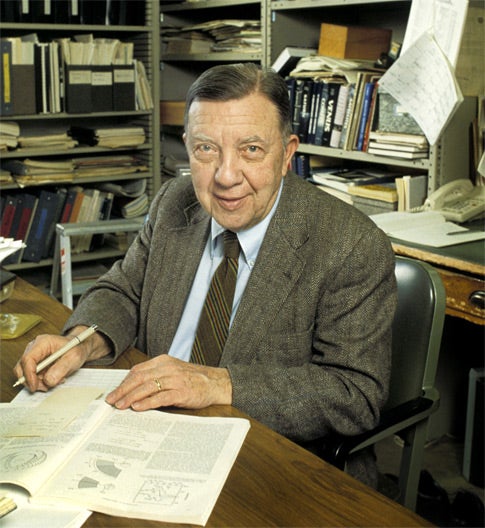
August 10, 2006
James Van Allen died yesterday at age 91 in Iowa City, Iowa, from heart failure. He greatly contributed to the United States’ space program during the early days of the Space Race and beyond.
“James Van Allen was one of the greatest and most accomplished American space scientists of our time, and few researchers had such wide range of expertise in so many scientific disciplines,” says NASA Administrator Michael Griffin. “NASA’s path of space exploration is far more advanced today because of Dr. Van Allen’s groundbreaking work.”
Born in Mt. Pleasant, Iowa, Van Allen graduated from Iowa Wesleyan College and the University of Iowa with a doctorate in nuclear physics in 1939 before joining the Department of Terrestrial Magnetism of the Carnegie Institution in Washington. He later moved to the Applied Physics Laboratory (APL) of Johns Hopkins University. In 1942, he enlisted in the U.S. Navy, serving in the Pacific Fleet during World War II. After being discharged, he returned to the APL to study German V-2 rockets from the war.

James Van Allen at his desk at the University of Iowa.
Tom Jorgensen, University of Iowa Office of University Relations
After a fellowship with Brookhaven National Laboratory, Van Allen became the head of the University of Iowa’s physics department. There, he continued his experiments with rockets lifted by balloons prior to launch, taking instruments into the upper atmosphere.
In 1958, a Geiger detector and a cosmic-ray experiment designed by Van Allen orbited Earth aboard Explorer I, the first American satellite. The subsequent data returned from this and future satellites revealed Earth is surrounded by a radiation belt, now known as Van Allen Belt. This discovery initiated magnetospheric physics research. Thanks to his work, Van Allen became a national icon, appearing on the cover of Time Magazine in May 1959.
“Great discoveries are the hallmarks of exploration,” says Lou Friedman, founder and executive director of The Planetary Society. “Van Allen provided many such hallmarks, including the one that will forever bear his name around our planet. He was a great scientist, a great explorer and a great man.”
During his career, Van Allen was the principal investigator for scientific investigations on 24 satellites and planetary missions, beginning with the first successful American satellite, Explorer I, and continuing with Pioneer 10 and Pioneer 11.
Although he retired from the University of Iowa in 1985, Van Allen continued to live in Iowa City and served as the Carver Professor of Physics, Emeritus.









